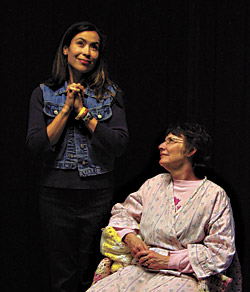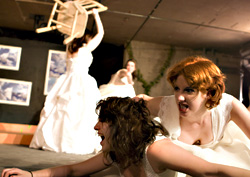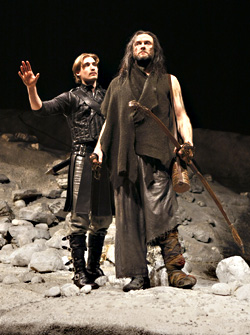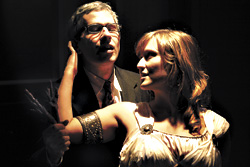Most revered for dreaming up what he termed “an upside-down sort of novel” called Flaubert’s Parrot, the literary equivalent of the perversely inverted films of Michel Gondry, Julian Barnes now produces an aggressively right-side-up sort of novel, Arthur & George (Knopf, $24.95). A squat edifice composed in a modernized, fun-to-read pastiche of period prose, the book intelligently insinuates its fanciful inquiries into a real historical situation: the improbable collision of Sir Arthur Conan Doyle and an obscure Midlands lawyer named George Edalji, circa 1907.
Edalji’s plight has been described as Britain’s analogue to the Dreyfus Affair, but it’s nowhere near as famous, even though it led to the establishment of the nation’s first appeals court, thanks in large part to Conan Doyle’s athletic agitation on the poor guy’s behalf. Edalji was a rather narrowly legalistic man raised by a Bombay immigrant of Zoroastrian ancestry who became a vicar unwisely sent to tend the racist flock of Great Wyrley, Staffordshire. The vicar thinks of himself as utterly English; his fellow citizens regard him as a goddamn wog who married a Scotswoman and sired half-caste children inclined to shadowy animalistic practices of a distastefully un-English nature.
So when some maniac starts to slice open the bellies of honest, upstanding Staffordshire cattle on moonlit nights, and somebody posts lurid letters boasting about it, circumstantial evidence and circumambient prejudice point to the vicar’s son, George.
Though the book rigorously parallels the life stories of both George and the creator of Sherlock Holmes, the first half of the narrative belongs almost wholly to George. Barnes puts us right inside his head, from childhood chapters that slightly echo Joyce’s Portrait of the Artist through his intellectual coming of age, his kangaroo-court conviction, and his release after three years’ penal servitude—still with a cloud of guilt remaining over his head.
At first, surprisingly, George’s meticulously logical mind and existential yet contented loneliness make him more interesting than the more conventional yet famous writer. Born into a penurious family, young Conan Doyle vows to grow up and buy a castle for his mother. In later life, he’s so tied up in apron strings that he has no passion left over for his sickly, loyal wife and faceless kids. Conan Doyle’s decade-plus platonic affair with a sparkier young woman adds a trace more intrigue to his tale.
But he never really takes off as a character until, following his first wife’s death, he treats his grief—and ducks Jean Leckie’s increasingly urgent bid to become his second wife—by trying to exonerate Edalji and nab the actual perpetrator.
Here, Barnes captures much of the galloping deductive fun of the Holmes stories in a far superior style, with infinitely greater psychological depth and alertness to the details of the observable world. His skewering of rural idiocy is more ruthlessly skillful than the cow killer himself. He also seamlessly blends in many actual newspaper and government reports, letters by Conan Doyle and the anonymous accuser (weird but true), and parliamentary debates.
With all this detail, Arthur & George goes a long way into the dark heart of Edwardian life, and its warmer heart, too. The most fun parts are when Conan Doyle gets his sarcastic blood up, mocking officials who think “a respectable lawyer, bat-blind and of slight physique, becomes a degenerate who flits across fields at dead of night, evading the watch of 20 special constables, in order to wade through the blood of mutilated animals.” Conan Doyle is also witty on domestic intrigues. When Jean says, “We must talk,” he wisely reflects, “Whenever a woman says something must be talked about, it is rarely something to a man’s comfort or advantage.”
Fine as it is, the novel is not Barnes at his best. It takes insanely long for Arthur and George to meet, the plot is both predictable and aimless, and the finale is inconclusive. The theme of Conan Doyle’s mysticism has no magic. The critic David Thomson has brilliantly likened Barnes to “a droll, finger-snapping ringmaster guiding his adroit innovations past literary statuary.” This time, too often, his characters seem like statuary. Reality weighs down his narrative in a way it never did in the aerobatic Flaubert’s Parrot.
But in its best moments, the book does what mysticism never could: It brings Sherlock’s rampageous creator back to life.
Julian Barnes will appear at Elliott Bay Book Co., 7:30 p.m. Thurs., Feb. 9.








